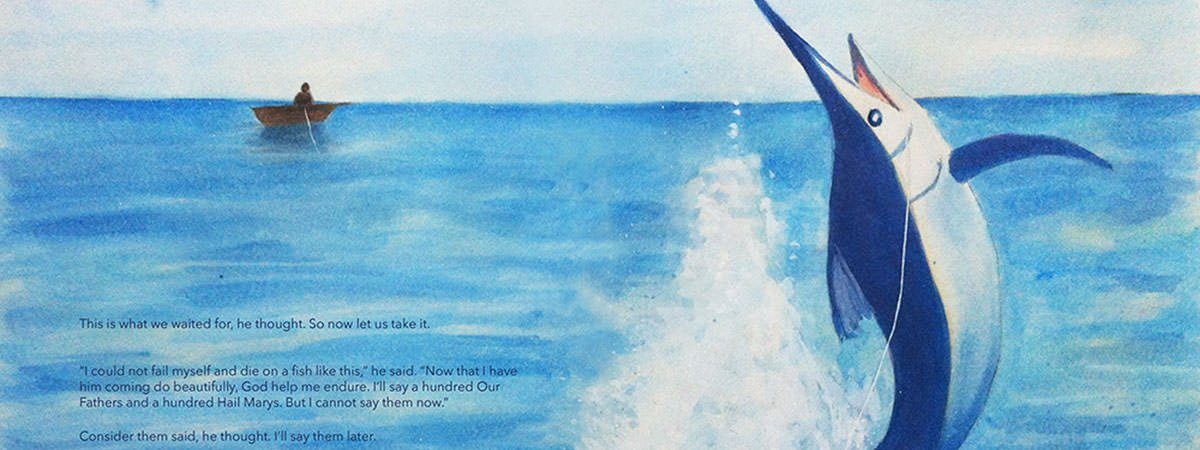Ernest Miller Hemingway (July 21, 1899 – July 2, 1961) was a renowned American writer and journalist of the 20th century. His writing career spanned more than four decades with most of his work being produced between mid-1920s and mid-1950s. He began his career as an author of short stories and poems before publishing his first novel in 1926. His exemplary works include titles like The Sun Also Rises (1926), A Farewell to Arms (1929), For Whom the Bell Tolls (1940) and The Old Man and the Sea (1952); the short novel for which he was awarded the Nobel Prize in 1954. Ernest Hemingway is widely regarded as one of the greatest writers of the 20th century. Here is a summary of his writing career.
| SPECIFICATION | TITLE | PUB YEAR |
|---|---|---|
| First Published Work | Three Stories and 10 Poems | 1923 |
| Last Published Work | The Old Man and the Sea | 1952 |
| Latest Published Posthumously | True at First Light | 1999 |
Hemingway began his early forays into writing during his senior years at the Oak Park and River Forest High School, in Illinois, Chicago. Inspired by teachers like Margaret Dixon and especially Fannie Biggs, Hemingway regularly contributed and sometimes edited the school’s literary magazine and newspaper (Trapeze and Tabula). On graduating in 1917, Hemingway discarded his college ambitions and took up a job as a cub reporter in the Kansas City Star newspaper. Following the writing guidelines of the Star, Hemingway began developing a precise and stripped down writing style that would serve him well in his future career.
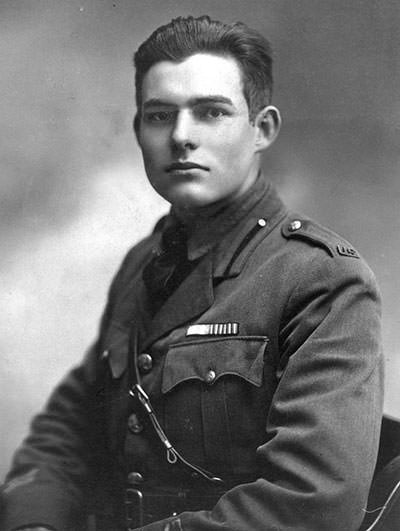
Hemingway joined the Toronto Star and the Cooperative Commonwealth in Chicago after returning from his Red Cross service in the First World War. In 1921, he was chosen as the foreign correspondent for the Toronto Star and moved to Paris. Here while covering events like the Greko-Turkish war, Hemingway began his career as a story writer. In 1923, his first collection, Three Stories and 10 Poems, was published in Paris which was followed by the more famous In Our Time in 1925; which included 14 of Hemingway’s breakthrough short stories like “Indian Camp”, “The Battler”, “Big Two-Hearted River” and “The End of Something”.
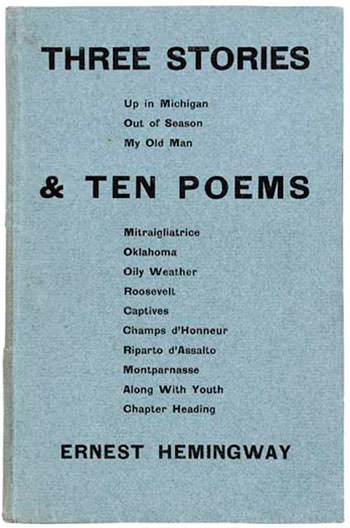
The following year in 1926, Hemingway published his first novel The Sun Also Rises; story of a group of aimless American and British expatriates from Left Bank in Paris and their visit to Pamplona, Spain. The novel was received well by the critics for capturing the authentic flavor of Spain and Hemingway’s writing style was praised as direct, uncluttered and completely free of sentiment. This work was also Hemingway’s first solid success introducing him to the limelight, which he both craved and resented for the rest of his life. It was followed by the 1927 collection Men Without Women, which included stories like “In Another Country”, “The Killers”, “Fifty Grand” and “Now I Lay Me”.
In 1929, Hemingway produced one of his most important works A Farewell to Arms. The story was narrated by a semi-autobiographical character Lieutenant Frederic Henry, an American volunteer driving ambulances for the Italian Army. “A Farewell To Arms” explored Henry’s romantic relationship with the British nurse Catherine Barkley, in the backdrop of the events of the First World War. The book went on to become an instant bestseller, was lavishly praised by the critics and established Hemingway as a major writer of his time. Understated, laconic and detached, the novel appealed to America’s disgust with the Great European War, it’s appetite for sad love stories and its growing isolationist tendencies.
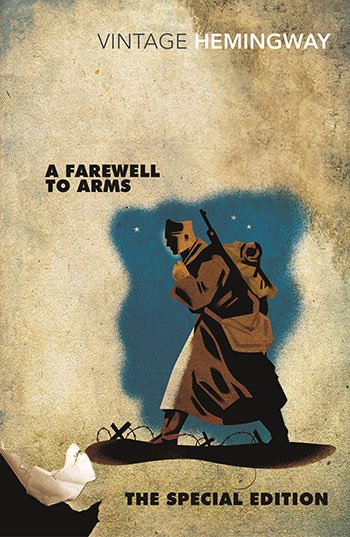
In the 1930s, as America was gripped by the Great Depression, much of the fiction of the 1920s was repudiated for its nihilistic selfish characters. Hemingway produced no fictional work during most of this time giving his detractors less opportunity to run him down. Instead he came up with non fictional works like his 1932 book on bullfighting Death in the Afternoon. Other works included the 1934 collection Winner Take Nothing and the 1935 safari book Green Hills of Africa. All these books got mixed reviews and failed to impress. During this time left wing critics wanted Hemingway to become a proletarian novelist and write about the troubles of the underclass.
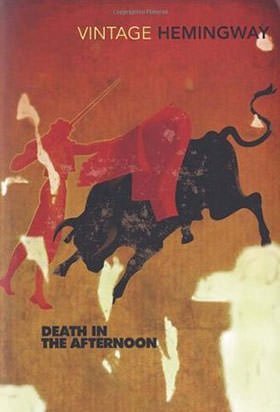
His 1937 novel To Have And Have Not was based in Key West (USA) and Cuba and was centered around the times of the Great Depression. Told from multiple viewpoints the novel was indeed influenced by the Marxist ideology, but it’s violence, sexuality and rough language disturbed many critics. The work was called confused and weak. The book was however still a success among the people. The same year Hemingway also travelled to Spain to cover the Spanish Civil War on behalf of the North American Newspaper Alliance (NANA), experience that would provide the fodder for his next major work.
Published in October 1940, For Whom The Bell Tolls narrated the story of Robert Jordan, a young American volunteer attached to a Republican guerrilla unit during the Spanish Civil War (1936-1939). The book was a spectacular success selling over half a million copies in less than 6 months. It was overwhelmingly praised by the critics with some declaring it as the best work of Hemingway, while some others celebrating it as the redemption of the author. During the Second World War (1939-1945), Hemingway published no other fictional work. He edited a collection of war stories and contributed feature journalism to Collier’s magazine.
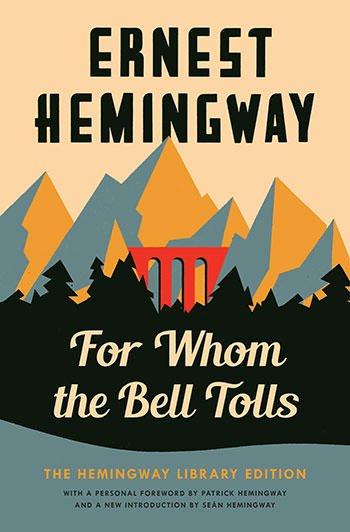
In 1950, after almost a decade of silence, Hemingway published Across The River And Into The Trees. Set in Venice in Italy, the story was centered on a Second World War veteran Colonel Richard Cantwell, and the last three days of his life spent in the company of a young beautiful woman named Renata. The novel was moderately successful but was considered by most as Hemingway’s weakest work.
Receiving severe critical backlash for his previous work, Hemingway responded by readying the draft of The Old Man And The Sea in eight weeks and famously saying that it was ‘the best I can write ever for all of my life’. The book was first released in 1952 in a single issue of Life Magazine, which sold out 5 million copies within a week. His all time best selling and most famous work, “The Old Man And The Sea” was a short novel concerning a Cuban fisherman Santiago, his epic struggle with a gigantic marlin and his victory in defeat. The book furthered Hemingway’s reputation nationally and internationally and was translated into several languages within a year of publication. In 1952, Hemingway was awarded the Pulitzer prize for literature for “The Old Man And The Sea” which was soon after followed by him being awarded the Nobel Prize in 1954.
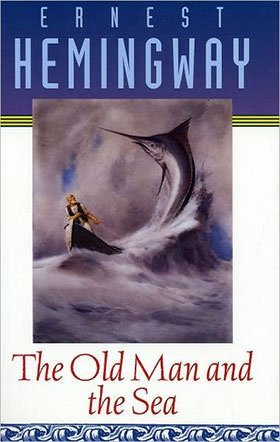
Hemingway’s Nobel prize winning work would also be his last published novel until his death in 1961. However during most of the 1950s, Hemingway worked prodigiously leaving behind, in various stages of completion, three novels, a memoir and another book on bullfighting. These books would be edited and published after the writer’s death and include the titles:-
- A Moveable Feast; mostly edited by Mary Hemingway and published in 1964, the book was an account of Hemingway’s early years in Paris spent in the company of the city’s literary crowd.
- Islands in the Stream; once a part of the Hemingway’s planned land-sea-air trilogy about WWII, the book was edited by Hemingway biographer Carlos Baker and published in 1970.
- The Garden of Eden; edited by Tom Jenks and published in 1986, the novel was Hemingway’s effort to depict the condition of the twentieth-century artist.
- True At First Sight; edited by Patrick Hemingway and published in 1999; the book was a fictional memoir of Hemingway’s African safari from 1954 and had been unfinished at his death.
The 1950s also saw important critical and biographical works by American academicians on Hemingway. Books like Carlos Baker’s “Hemingway: The Writer as Artist” and Phillip Young’s “Ernest Hemingway” would determine the course of Hemingway studies for decades after his death, and further the legend of one of America’s greatest writers.
MAIN Sources:-
Reynolds, Michael. 2000. “Literary Masters Vol 2 – Ernest Hemingway”. P58-70.Gale Group Detroit.
Meyers, Jeffery (1985). “Hemingway – A Biography”. P57,58, 98, 99, 144, 145, 192, 302, 334. 440-452 Harper and Row
Mellow, James R. (1992). “Hemingway – A life without Consequences”. P 378. Addison Wesley Publishing Company
Desnoyers, Megan Floyd (1992). “Ernest Hemingway: A Storyteller’s Legacy”. P7.
Lecouras, Peter (2001). “Hemingway in Constantinople”. Gale Academy
“Star style and rules for writing”. KansasCity.com

